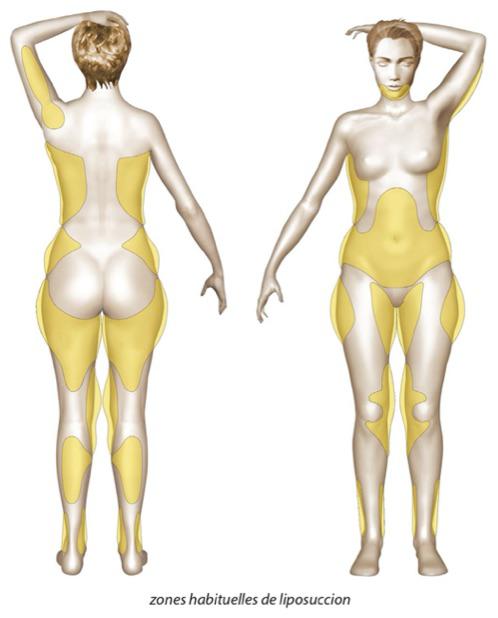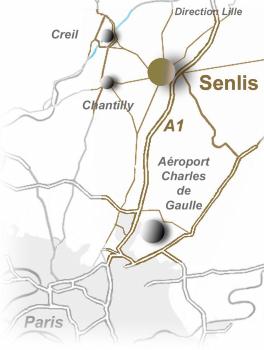AESTHETIC PLASTIC
RECONSTRUCTIVE
SURGERY
SEBASTIEN GARSON M.D
LIPOSUCCION
This fact sheet was developed under the aegis of the French Society of Plastic Reconstructive and Aesthetic Surgery (SOF.CPRE) as an addition to your initial consultation, to try to answer all the questions you can ask yourself if you plan to use surgery baldness. The purpose of this document is to provide you with all the necessary and essential elements of information to help you make your decision with full knowledge of the facts. Also you is it advisable to read with the greatest attention.
• DEFINITION OBJECTIVES AND PRINCIPLES
Liposuction can dramatically and permanently remove localized fat overload. These localized fat deposits do not disappear, in general, despite a diet or exercise. By cons, liposuction is not a weight loss method and its purpose is not to control the weight of the patient or the patient: and liposuction performed correctly will not make the economy improved healthy living. Liposuction is not the treatment of obesity.
The principle of liposuction (developed from 1977 by Yves-Gerard Illouz) is to introduce, from very small incisions, foam nozzles, rounded tip, blunt, perforated at their ends with several holes. These cannulas will be connected to a closed circuit in which a negative pressure is created. Thus the smooth, atraumatic aspiration of excess fat cells will be possible. To the extent that these fat cells do not have the ability to re-expand, there will be no recurrence of this overpopulation adipocytes. In practice, liposuction can be applied to a large number of body area: "saddlebags" of course, but also the hips, abdomen, thighs, knees, calves, ankles, arms . Technical improvements have also helped to expand its focus on the face and neck (double chin, oval face).
Recent advances, particularly in the field of superficial liposuction, through the use of very fine cannulas are the overlying skin in the treated area no longer has to suffer from liposuction: on the contrary, the appearance of the skin can be improved by skin retraction that generates a superficial liposuction performed correctly.
However, keep in mind that liposuction, despite its extreme commonplace in recent years, should always be considered a true surgical procedure that must be performed by a competent and qualified plastic surgeon, trained specifically for this type technical and working in a surgical context.
• BEFORE THE OPERATION
A preoperative assessment is carried out according to regulations.
The anesthesiologist will be seen in consultation at least 48 hours before surgery. No medication containing aspirin should be taken within 10 days before surgery. Depending on the type of anesthesia, you may be asked to remain fasting (nothing to eat or drink) 6 hours before surgery.
• TYPE OF ANESTHESIA AND CONDITIONS OF INTERVENTION
Type of anesthesia:
Liposuction can be performed, depending on the case and the importance of the areas to be treated, either under local anesthesia or under local anesthesia depth by tranquilizers administered intravenously (anesthesia "vigil") or under general anesthesia, possibly under regional anesthesia (epidural or spinal anesthesia).
The choice between these techniques is the result of a discussion between you, the surgeon and the anesthetist.
Terms of admission:
The length of stay depends on the amount of fat removed. It may be short, on the order of several hours for smaller liposuction (when we used a local anesthetic). It will be 1 or 2 days for larger liposuction (under general anesthesia).
• INTERVENTION
Each surgeon adopts a technique of its own and it adapts to each case to obtain the best results. However, it may hold common basic principles:
The incisions are short (of the order of 3 or 4 mm) and discrete, because most often hidden in a natural fold. The fat is suctioned using foam nozzles, producing a regular network of tunnels that meet the vessels and nerves: thus treats the deep fat and surface fat.
The amount of fat extracted will of course be adapted to the quality of the overlying skin is one of determining the quality of the outcome factors.
A modeling dressing is then made with elastic bands, or one puts up a panty or a rubber sheath.
The duration of the procedure depends on the amount of fat to be extracted and the number of locations to be treated. It can vary from 20 minutes to 3 hours (average 1-2 hours).

AFTER THE INTERVENTION: THE OPERATING SUITES
It should be noted that the time required to retrieve and recover from liposuction is proportional to the amount
of extracted. grease In the postoperative course, bruises (blue) and edema (swelling) occur in the treated areas.
The pain can vary, but are generally minor, by using very fine cannulas. Fatigue can be felt the first few days, especially if significant fat extraction. Normal activity can be resumed 4-7 days after surgery, again depending on the importance of liposuction and type of occupation.
Bruising subside within 10 to 20 days after surgery.
Wearing an elastic compression garment is recommended for 2 to 4 weeks. One can foresee a resumption of sporting activity 3 weeks after surgery. It should not expose to sunlight or UV regions operated for at least 3 weeks. There is no net change in appearance over the first 2 to 3 weeks, since there are early post-operative surgery tissues (edema) swelling. It was only after three weeks, and after the absorption of the edema, the results begin to appear. The skin will take about 3-6 months to fully retract the new curves and readjust to the new silhouette.
• THE RESULT
Appreciated permanently within six months after the intervention, it is usually satisfactory, whenever the indication and technique were correct: liposuction has allowed to overload localized fat disappear forever, while resulting in an appreciable shrinkage of the skin.
• FAULTS OF THE RESULT
We have seen that, in most cases liposuction properly indicated and performed, rendered a real service to the patient (s), with obtaining a satisfactory and consistent with what was expected result. In some cases, localized imperfections can be observed, they are not real complications failure correction, residual asymmetry, surface irregularities. They are generally accessible to further treatment: small "touch" of liposuction often performed under local anesthesia from the sixth postoperative month.
• POSSIBLE COMPLICATIONS
Liposuction, although carried out mainly for aesthetic reasons, are nevertheless a real surgery, which involves the risks associated with any medical procedure, however small it may be. We must distinguish the complications of anesthesia and those related to the surgery.
For anesthesia, during the consultation, the anesthetist inform himself the patient anesthetic risks. You should know that anesthesia in the body sometimes unpredictable, and more or less easy to control: the fact of using a fully qualified anesthetist, working in a surgical context, that the risks are now almost statistically insignificant. You should know, indeed, that the techniques, anesthetics and monitoring methods have made tremendous progress over the past twenty years, providing maximum security, especially when the operation is performed outside of the emergency and in a healthy person.
Regarding surgery: choosing a qualified and competent plastic surgeon, trained in this type of surgery, you limit these risks, without removing them completely. The real complications are rare after liposuction quality: a rigorous in the placement of the surgical indication and implementation must ensure in practice efficient and effective prevention.
For completeness, we must mention, however, despite their usual scarcity:
thromo-embolic accidents (phlebitis, pulmonary embolism), which are the most serious complication. Their risk of occurrence is increased if an accident is in the patient's history. Wearing low antithrombotic, sunrise and a possible early anticoagulant therapy help reduce this risk.
Bleeding is rarely serious, but bleeding disorder associated.
hematoma and lymphatic effusion appear exceptionally the waning of liposuction performed correctly.
Similarly, localized skin necrosis, which lengthen the healing time and can leave scars, should be observed.
The infection can be prevented by prescribing antibiotic prophylaxis.
Finally, metabolic disturbances were observed waning of excessive liposuction quantitatively.
In total there should not overstate the risks, but just be aware that surgery, even seemingly simple, still a small share of hazards. The use of a qualified Plastic Surgeon ensures that it has the training and knowledge required to avoid these complications, or effectively treat if jurisdiction.
These are the pieces of information that we wanted to bring you in addition to the consultation. We recommend that you keep this document, read it again after the consultation and reflect "a clear head." This reflection may raise new questions for which you wait for additional information. We are available to talk during the next consultation, or by phone, or even on the day of surgery when we meet in any way before anesthesia.
CONTACT
Contact Us
Phone : + 33344282959
Address:
7 impasse de la Passerelle 60300 SENLIS
France

Copyright SELARL Dr Garson Pages d'information- Crédits photos : Dr Garson / Libre de droits - Mentions légales
Ce site utilise des cookies à des fins statistiques - Pour en savoir plus, cliquez ICI.
SITE RÉALISÉ AVEC WEBACAPPELLA RESPONSIVE